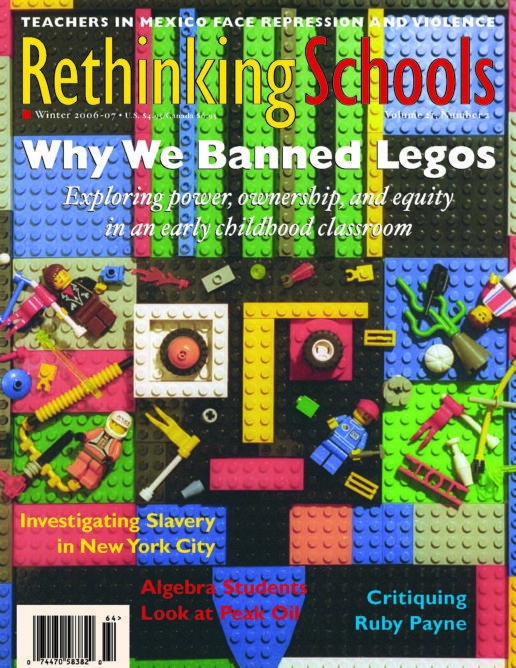Resources and Background
Since 1996, the New York State Human Rights curriculum is supposed to include guidelines and material for teaching about the European Holocaust, the Great Irish Famine, and slavery and the Atlantic slave trade. A curriculum on the Great Irish Famine was completed and distributed by the state in 2001. A number of Holocaust curricula have been developed by museums, local school districts, and nonprofit agencies (e.g., Facing History and Ourselves). But an official curriculum for teaching about slavery and the Atlantic slave trade was never developed because of political conflict. The state Department of Education envisioned a slavery and the Atlantic slave trade curriculum as a celebration of “New York’s Freedom Trail” and its role on the underground railway and as a base of operations for abolitionists.
Many historians, especially those from the African-American community, wanted students to take a much more critical look at the state’s role in promoting and profiting from human bondage. While many prominent individuals from New York State were important abolitionists and the state did offer safe haven to some escaped slaves, slavery existed in New York until 1827. Of greater historical importance is the state’s economic and political complicity with the Southern and Caribbean “slavocracy,” and the continuing involvement of its merchant and banking elite with the illegal Atlantic slave trade up until the Civil War. Slavery and the Atlantic slave trade, rather than just being a Southern institution, were integral parts of the national and global economy in the 18th and 19th centuries and produced much of the capital that financed the industrial revolution in Europe and the United States.
The New York and Slavery: Complicity and Resistance curriculum guide used in Michael Pezone’s African-American history class opens with an examination of the trans-Atlantic slave trade and follows the history of New York State from the original Dutch settlement at the beginning of the 17th century through the end of the Civil War. It focuses on the positions and contributions of people of African ancestry in New York during this period and on the roles played by the citizens of New York in both maintaining and challenging the slave system.
The curriculum guide was developed independently with support from the “Gateway to the City” Teaching American History Grant, a partnership of the Hofstra University School of Education and Allied Human Services, the New York City Department of Education, and the Brooklyn Historical Society. More than 80 classroom teachers in the New York metropolitan area participated in researching, developing, and field-testing lessons. In November 2005, the New York and Slavery: Complicity and Resistance curriculum guide received a National Council for the Social Studies program of excellence award. The entire guide is available at the website of the New York State Council for the Social Studies (www.nyscss.org).
The curriculum guide was edited by Dr. Alan Singer and Mary Carter of the Hofstra University School of Education and Allied Human Services.
Other Resources Used for Creating the New York and Slavery African American Heritage Trail Markers:
Slavery in New York by Ira Berlin and Leslie Harris (New Press, 2005)
Slavery and the Making of America by James and Lois Horton (Oxford, 2005)
Black Legacy, A History of New York’s African Americans by William Loren Katz, (Atheneum, 1997)

